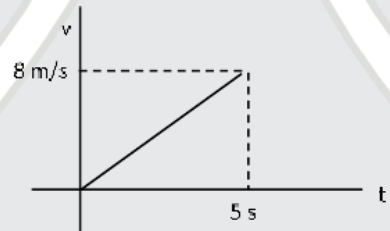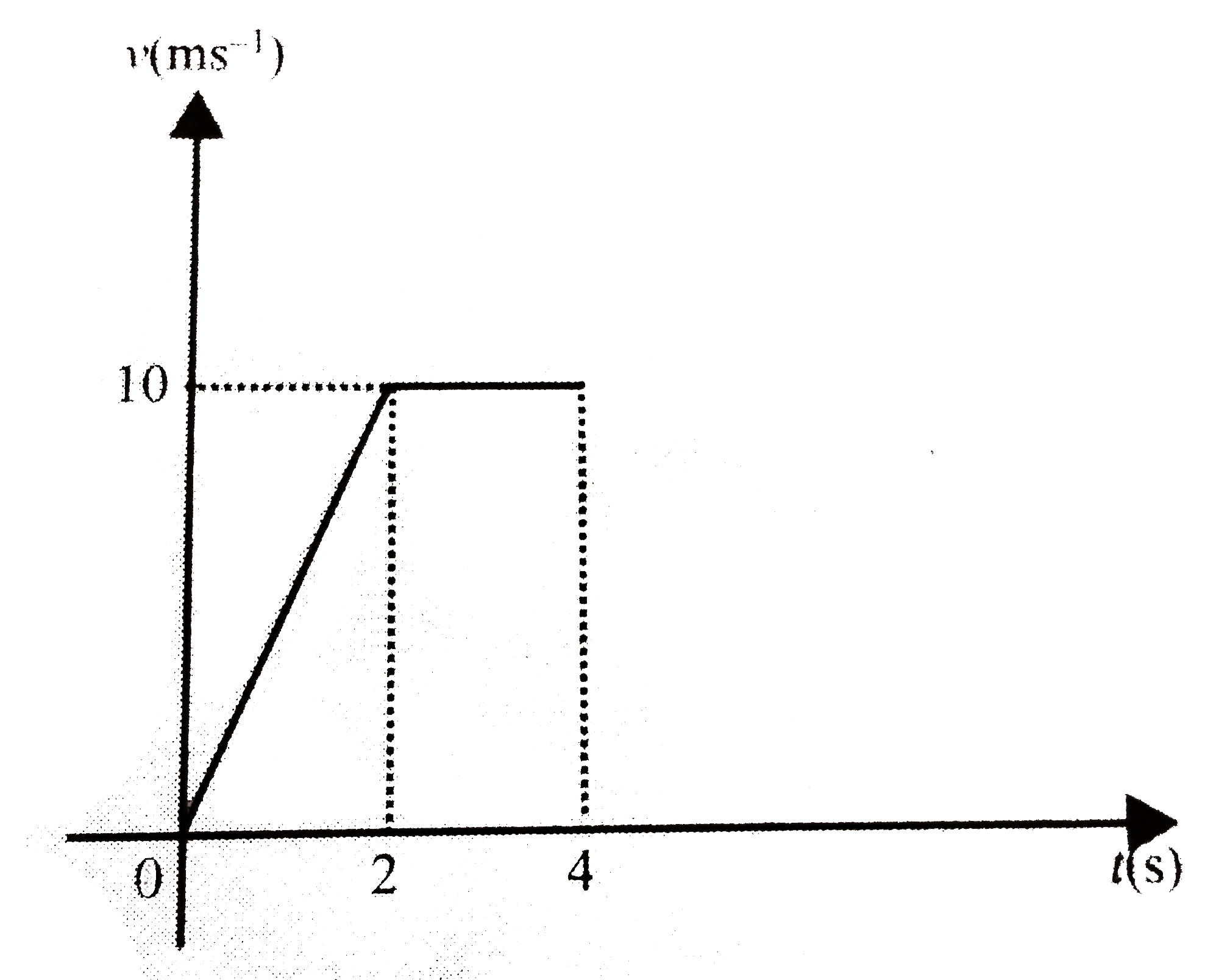Consider a particle intially moving with a velocity of 5 m s−1 starts decelerating at a constant rate of 2 m s−2.
a. Determine the time at which the particle becomes stationary.
b. Find the distance travelled in the second second.
c. Find the distance travelled in the third second.
a. Here u=5ms−1,a=2ms2,v=0t=?
Using v=u+ at, where
0=5−2t⇒t=2.5s
b. Hnece u=5ms−1,a=−2ms−2,n=2.
Using xn=u+a2(2n−1)=522[(2)−1)]=2m
c. Here, if we use the above fromula, we will get xn=0. But in reality it is not zero. This fromula is not applicable for the third second becoause velocity becomes zero in the third second, i.e., at t=2.5s. The particle has a turning point at t=2.5s. We have to indirectlu calculate the distance travelled in this distance tramelled between is, we have to derermine the distance travelld between 2gt=t≤2.5 and 2.5gt=gt=3, and then add the two .
Displacemect of the particle at t=2.5s is
x2.5=u22a=(5)22(2)=6.25m
Due to sysemtry, the displacement of the pariticle at t=2s and t=3s are same, i.e.,<br>Thus,thedistancetramel≤d∈thethirdsecondis<br>x=x_(2.5))-x_(2)+x_(2.5)=x_(3)<br>(6.25-6)+(6.25)-6)=0.5m.
Topper's Solved these Questions
- BOOK - CENGAGE PHYSICS ENGLISHCHAPTER - KINEMATICS-1EXERCISE - Solved Examples9videos
KINEMATICS-1
- BOOK - CENGAGE PHYSICS ENGLISHCHAPTER - KINEMATICS-1EXERCISE - Exercise 4.117videos
KINEMATICS-1
- BOOK - CENGAGE PHYSICS ENGLISHCHAPTER - GRAVITATIONEXERCISE - INTEGER_TYPE1videos
GRAVITATION
- BOOK - CENGAGE PHYSICS ENGLISHCHAPTER - KINEMATICS-2EXERCISE - Exercise Integer9videos
KINEMATICS-2
Similar Questions
Speed time graph of a particle shown in figure. Find distance travelled by particle in 5second.
 View Solution
View SolutionA body starts from rest and accelerates with 4m/s2 for 5 seconds. Find the distance travelled with 5 seconds.
View SolutionA body ,starting from rest and moving with constant acceleration,covers 10m in the first second.Find the distance travelled by it in the next second.
View SolutionA particle having initial velocity 4 m/s moves with a constant acceleration 1m/s2 for a time interval of 10 second in straight line. Find the displacement of the particle in the last second and the distance travelled in 10 second.
View SolutionThe speed of a car increases uniformly from zero to 10ms−1 in 2s and then remains constant (figure)

a. Find the distance travelled by the car in the first two seconds.
b. Find the distance travelled by the car in the next two seconds.
c. Find the total distance travelled in 4s.View SolutionA particle travels a distance of 20 m in the 7th seconds and 24 m in 9th second. How much distance shall it travel in the 15th second?
View SolutionThe period of a particle in SHM is 8s. At t=0 it is in its equilibrium position.
(a) Compare the distance travelled in the first 4s and the second 4s.
(b) Compare the distance travelled in the first 2s and the second 2s.View SolutionA particle moving along a straight line with a constant acceleration of −4m/s2 passes through a point A on the line with a velocity of +8m/s at some moment. Find the distance travelled by the particle in 5 seconds after that moment.
View SolutionFrom the velocity time plot shown in figure find the distance travelled by the particle dureing the first 40 seconds. Also find the average velocity during this period.
 View Solution
View SolutionA particle moves along x-axis such that its position veries with time as x=50t−5t2. Select the correct alternative (s).
View Solution

